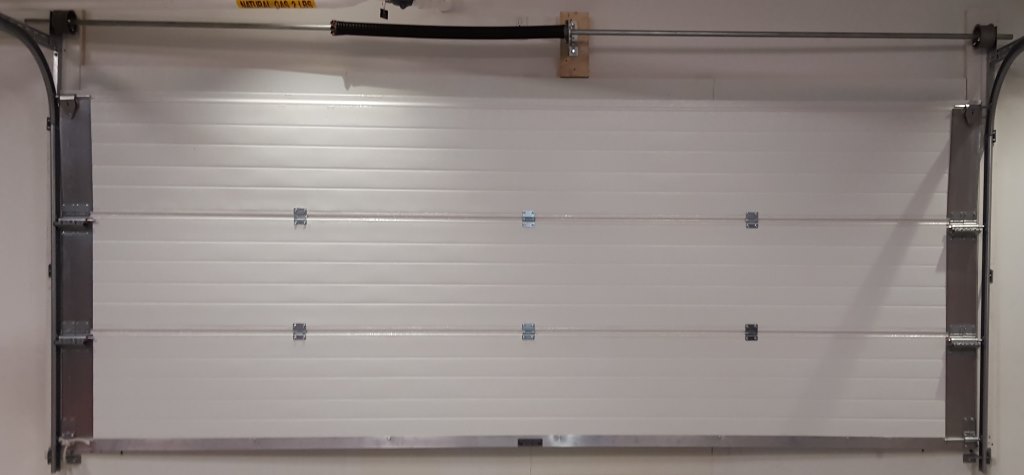Garage doors have a lot of moving parts, and if your door is opened and closed frequently, many of those parts will wear out. If your garage door springs are broken or improperly tension, the safety of your door is compromised, and your door will not function correctly. This condition will also put additional stress on your electric opener, causing it to break or malfunction. Here are some components to check:
Spring(s): Are they broken? You can test the spring tension of your door. If you have an electric opener, you will need to close your door and pull the string on your opener to disconnect it. Then open the door halfway and if it does not remain still, your spring(s) are either broken or in need of adjustment. However, you should not attempt to adjust or remove standard torsion springs yourself; they can be very dangerous. Instead, contact us here.
Cables: Are there any worn strips hanging loose on the sides of your door? Are the cables frayed? If so, they are in danger of breaking and could cause serious injury or property damage if not replaced. Contact us to replace the cables.
Rollers: Do the rollers on the ends of your door move smoothly and quietly? If not, they may require lubrication or replacement. We recommend a high quality nylon roller for the smoothest and quietest operation.
Sections: Look for peeling or fading paint, rust or dented sections.
Track: Are the tracks on either side of your door bent or twisted? Are they solidly attached to the door jambs, and the ceiling via the rear track hangers?
Hinges: Are the hinges that join the door sections bent or broken? If they are, they should be replaced.
Caution: The bottom brackets on all garage doors must not be removed while the door is under tension. We recommend one of our trained professionals is used for garage door repairs.


Recent Comments